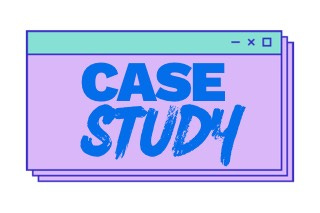MOO Case Study: How I Applied Design Thinking to Product Marketing.
And why doing exactly what customers ask can be risky.
In 2016, I spearheaded the launch of a stunning new product at MOO: our own vibrant and colorful MOO notebook. Before this, we heavily relied on third-party vendors, often facing issues with out of stock issues or complete product retirements, which left our customers frustrated. To solve this, and to reinvent the perfect notebook, we introduced the MOO notebook, and it quickly became a favorite among both consumers and businesses.
The following year, we expanded our offering by introducing custom notebooks, giving businesses the opportunity to personalize them and express their unique identities.
Soon, customers began asking for more than just six colors. In response, our product team diligently researched the trendiest shades and expanded our selection to 42 vibrant colors.
Jumping from 6 to 42 colors was no easy feat, so imagine our disappointment when customers still weren't pleased.
Because there’s always that customer that wants the 43rd color you don’t have.

Let me tell you what went wrong and how it was solved applying design thinking principles.
What went wrong
The major problem was that we applied a linear analytic approach.
We listened to what customers were asking for and, given our previous success with launching new colors, we immediately went into solution mode and introduced those 42 new shades.
How it was solved
We started with empathy. We made a dedicated effort to understand why the colors we offered were not meeting the needs of our customers.
A common thread quickly emerged: our customers wanted to fully represent their brand through MOO custom notebooks. Naturally, if you were Tiffany & Co., none of our colors would be suitable.
It became clear that when customers said, "I want more colors," they were pushing a less-than-ideal solution. What they truly wanted was, "I want my brand colors."
This realization prompted us to build a narrative that could better address our customers' needs, their JTBD (Jobs-to-be-done) a narrative that described the “promised land” we wanted to build for them. We began asking ourselves: What if customers could print any color they wanted? Even better: What if they could print anything?
During the prototyping stage, product, product marketing and business operations worked closely to define a solution that was feasible, valuable and profitable.
This thinking led to an innovative solution: a combination of three components that, when assembled together, resulted in a unique branded experience.
The last piece of the journey was to produce a small batch, put them in front of our customers and prove the concept.
The product not only delighted users but also generated media interest which helped amplifying the story and driving millions of dollars in revenue.
Key lessons learned from this initiative
You don’t need to be a designer to apply Design Thinking.
Human-centered problems with little data that can’t predict the future are perfect candidates for Design Thinking.
Because we can do a thing doesn’t mean we should do a thing.
Embrace the fact you probably won’t get it right the first time.
Always pick ideas that create value for the customer, can be executed and are profitable.















